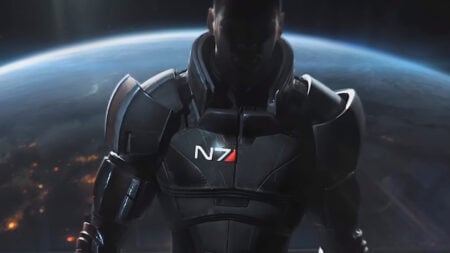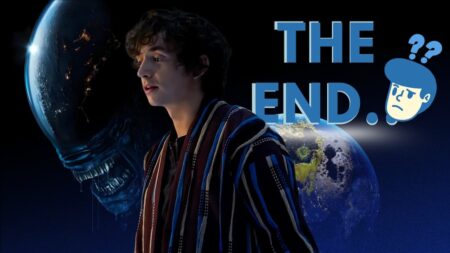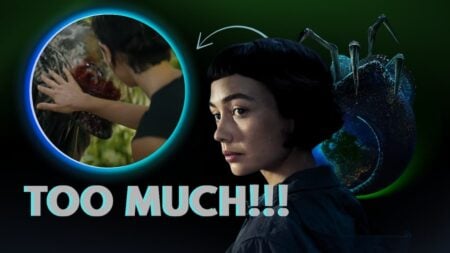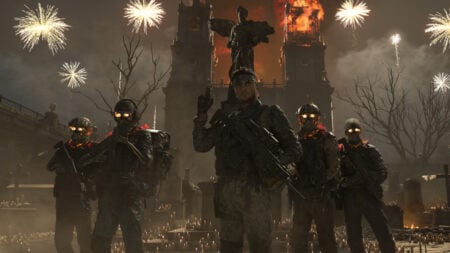Skip To...
The release of Netflix’s Avatar: The Last Airbender has brought the beloved franchise back to the forefront of the media’s eye. Reaction to the live-action remake has been…mixed at best, but there’s a different controversy behind the franchise’s long history. There’s a separate discussion as, once again, fans debate the question: was the The Legend of Korra good? I mean…yes, it was. It was very good.
I’m Sorry, But The Legend of Korra Was Good

I’m not out here trying to lie and say The Legend of Korra was an example of prestige television. It’s certainly not a masterpiece. It shares many flaws with the rest of the franchise (some more than others). I could go without the tired love triangle that takes away from most of the characters involved, especially Mako, designated as the hot eye candy with no character beyond that.
However, the show is a miracle of a sequel, an incredible surprise for my 12-year-old self who grew up watching reruns of the original show. The show was announced as early as 2010, hyping up fans to experience the story of the next Avatar. Unfortunately, the show suffered some tumultuous production issues that plagued the show for most of its run. I won’t go into huge details here, but essentially, the creators were never sure about how long The Legend of Korra would actually run.
The show was initially conceived as a 12-episode miniseries, which is what was delivered to us as “Book One.” This season was set to be a standalone series altogether and was written as such, without any expectations of future episodes whatsoever. As you can imagine, this made living up to the original series an impossible task — The Last Airbender had 61 episodes across three seasons to impress audiences with a bodacious story of epic scale. The Legend of Korra only had 12.
The Legend of Korra Expanded on The Last Airbender’s World

This isn’t an excuse to rid Korra’s first season of its flaws, but admittedly, it does make me more impressed with what the writers accomplished in such a short amount of time. Expanding upon The Last Airbender’s world is a daunting task, as the original show’s world-building was impressive in scale. However, for any grievance you might have about the show, it’s fascinating to see how the writers scaled up Avatar’s lore even further.
Republic City is a wonderfully vibrant new environment for our leads to explore. While Book One isn’t able to explore how the different nations of Avatar evolved since the original series run, it does provide a bustling new metropolis where benders of all nations gather and coexist. Original series concepts, such as metal bending, are expanded and improved upon in this sequel series. And like it or not, rare and novel concepts such as lightning bending are commonplace in this show.
The sequel series also introduces some stellar new characters that are worthy of praise. While I’m not admittedly supremely hot on a majority of Team Avatar (I’m sorry Mako and Bolin, or should I say, off-brand Sokka). Lin Beifong and Tenzin are amazing additions to the show, with Lin Beifong inheriting Toph’s hardheaded toughness, and Tenzin getting the best of both worlds with Aang’s spirituality and Katara’s loving nature. (Her temper, too!)
The Show Improved as it Progressed

After the success of Korra’s first season, the show was picked up for an additional 14 episodes, giving us a 14-episode second season. This is a bit of a divisive book; the show’s mishandling of Korra and Mako’s relationship and the drama between these characters bring the season down quite a bit, and the show loses some of its visual flair after the anime studio Perriot took over for about half of the season. It’s where the show loses much of its fans, especially after its divisive ending that sees Korra losing her connection to her past.
But once again, Book 2 gives us some great new characters. Varrick clears Bolin as the show’s premier comedic relief. The addition of Aang’s other children, Kya and Bumi, are also welcome additions to the cast, providing some interesting insight into the family overall. The two-parter episode introducing Avatar Wan, the very first Avatar, is some of the finest work seen in the entire franchise overall, no matter how rocky Book 2 could get. And the series only continued to improve.
Book 3 is where Korra finds its footing. It’s a dark, ambitious, and exhilarating season, featuring some of the finest fight choreography in the entire show and features the show’s best villains in the Red Lotus. Suyin Beifong, Toph’s second daughter, is an amazing character, and the Beifong family successfully expands upon Toph’s legacy. Korra also sheds any doubt about her abilities in this season, solidifying her status as a powerful Avatar and coming into her own as a character.
The Legend of Korra Had a Great Ending

The Legend of Korra is unlike The Last Airbender, in that each book is like its own serialized story. Each season has a different conflict, and while they continue plot threads present from prior seasons, stories are generally pretty self-contained. Thematically, however, each season features something for Korra to overcome, and the final season sees Korra at her most compelling. Korra conquers her tragedy and puts a hold on the plans of Kuvira, another great villain in Korra’s lineup of bad guys.
Kuvira is a great foil to Korra — both are hotheaded and strong fighters, but Kuvira chooses to use her strengths to conquer the world. It’s a bit of a gimmick that Korra had to feature one villain from each element, save for Fire, but Kuvira is a compelling character and provides a great capstone to a show that steadily improved since its initial episodes. Korra sticks the landing with a historic ending, with a budding romance between her and Asami.
And even if the story doesn’t capture your attention like I think it would (assuming you gave it an honest shot), there’s something to be said about the show’s incredible animation. The Legend of Korra has some of the finest fight scenes in any animated show that I’ve seen. If all else fails, you should still see the show at least once as a visual spectacle. Seriously, some of the fights are absolutely breathtaking.
The Legend of Korra is far from the perfect show, and it might not even match the quality of The Last Airbender. It’s certainly a victim of its own production follies, but Korra still manages to be a worthy companion to Aang and his story. Bring on the next Avatar!







